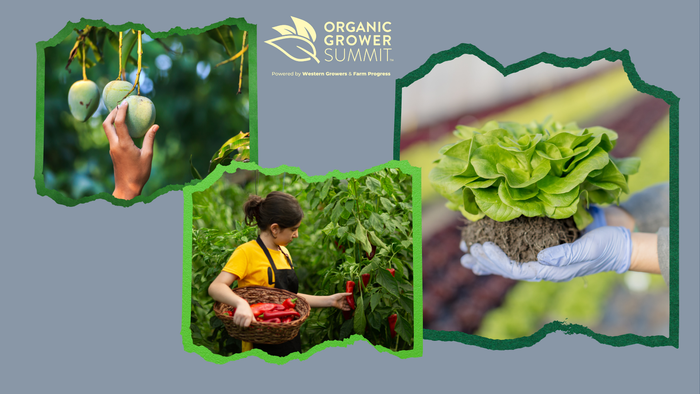Retailer roundtable: Overcoming the biggest challenges of 2023
Six independent retailers share their greatest threats of the past year and explain how they conquered those tests. Read their inspiring answers.
January 23, 2024

With 2023 in the books, natural products retailers can take stock of the past year—the highs, the lows and everything in between. By most accounts, it wasn’t an easy 12 months, marked by rising food costs, inconsistent supply chains, persistent staffing shortages and other headaches.
Yet for many independents, these challenges drove them to do what they do best: dig deep, get creative and find innovative solutions. Stores regrouped, pivoted and turned obstacles into opportunities, gleaning valuable lessons along the way.
Here, natural products retailers from all over the country share their greatest challenges of 2023, along with how they addressed them.
What was the biggest challenge your store faced in 2023 and how did you overcome it?

Bart Yablonsky, owner of Dawson’s Market in Rockville, Maryland
In the first half, we still struggled with finding quality staff interested in long-term employment. Luckily, that has significantly improved, and we finished the year staffed with quality people.
But the biggest challenge in 2023 was the rising cost of food. Plus, customers are still figuring out what the new normal will be. We have still not—and most likely will never—see a full return to office work. That has had a significant impact on our coffee bar and prepared foods departments, which, pre-COVID, had a strong consistent breakfast and lunch business. We adapted to rising costs and less lunchtime foot traffic by finding alternative-priced products. We leaned more heavily into grab-n-go focused on dinner, and we increased our events and in-store promotions to strengthen our local independent vibe.
2024 looks to be a better year with inflation softening and more interest in customers getting together in groups, which builds our catering business and improves attendance at in-store events, which sets us apart from the competition.

Tim O’Brien, owner of The Healthy Place in Fitchburg, Madison and Sun Prairie, Wisconsin
A struggle last year was revenue for our stores. Our website had some healthy growth, but getting the three stores to grow has been like pulling teeth. I am convinced this is because of inflation, cost of living and the internet's impact on retail.
But I realized that before I could focus on sales, I had to level up in some areas to get my team all marching to the same drum. I read the book Traction by Gino Wickman early in 2023, and I am so glad I did. The book helped me lock down accountability and goal setting. It helped me level up on my company’s communication top to bottom.
After getting some foundational items in order, we have a 10-point plan for how we are going to grow the stores this year. More exciting than that, we have communication, goal setting and accountability around those goals, giving us reason to believe that these goals can be hit.

Aaron Gottschalk, general manager of Wildberries Marketplace in Arcata, California
The biggest challenge to Wildberries Marketplace in 2023 was the economy, inflation and losing market share to low-priced leaders in our area such as Grocery Outlet and Winco. How we are working toward overcoming this present-day challenge is by investing in a partnership with an AI pricing tool. This tool is designed to improve our price image as well as drive revenue growth while maintaining our strong gross margin.

Ramona Billingslea, marketing manager at Betsy's Health Foods in Spring, Texas
Our biggest challenge in 2023 involved working even more closely with our manufacturers to make sure we had products for our shelves, as everyone scrambled at times to source raw ingredients, with many shortages we weren't exactly expecting. In conjunction with this issue, manufacturers have raised prices and/or reduced our margins, so we’ve had to pay more attention to individual product price points so that we can continue to provide our quality products at a price that still makes them appealing to our customers.
We pay more attention to out-of-stock reports from our manufacturers, stay in closer touch with our reps to ensure we get a heads up if a popular item might be running low, and track out-of-stocks to ensure reorders on less popular products that might otherwise fall through the cracks. We do our best to offer stopgap solutions for customers until the product they want is back in stock, including selling two smalls for the price of a large, when applicable, or the small size of a different but similar product.

Mark Sawall, owner and CEO of Sawall Health Foods in Kalamazoo, Michigan
Last year brought many new challenges in our industry. Since the pandemic, customer shopping patterns have changed and the products they are purchasing most often have changed. My store’s greatest challenge has been dealing with distributors’ product out-of-stocks. The industry’s largest distributors have struggled to provide us with adequate stocking levels to maintain our customers’ demand for the products.
Our managers have reached out to smaller distributors and connected with manufacturers to receive products directly. Managers have also had to discontinue products we have carried for decades to meet the demand of our customers. As an independent store open since 1936, we deal with distributors all over the United States, as well as importing products from Europe.

Jeff Shackelford, vice president of purchasing at Tulsa, Oklahoma-based Healthy Edge Retail Group, operator of Akin’s Natural Foods, Chamberlin’s and Earth Origins Market
We saw two big challenges in 2023. First, the supply chain was all over the board, and second, we saw cost increases on products. Both challenges kept us on our toes throughout 2023 and into 2024.
We attempt to manage supply chain issues by having a diverse supplier network that allows us to quickly move between suppliers when one might be out of stock, including ordering direct from brands where possible. We also adjusted ordering frequencies and minimum supply on hand, and we even added alternative products for items that experienced inconsistent availability or long-term out-of-stocks.
In terms of the cost increases, we look at all options to pass on savings to customers by forward-buying inventory before costs increase, offering special promotions to lower the price to the customer and, when necessary, identifying alternative products that may allow the customer to stretch their dollar a little farther.
About the Author
You May Also Like



.jpg?width=700&auto=webp&quality=80&disable=upscale)
